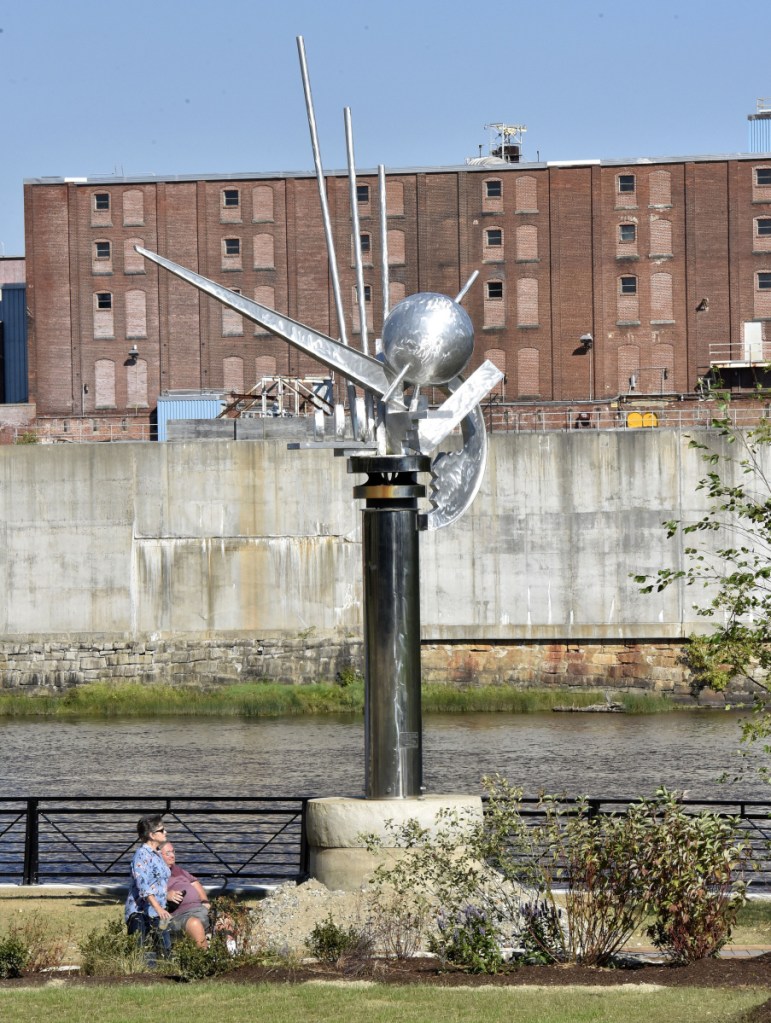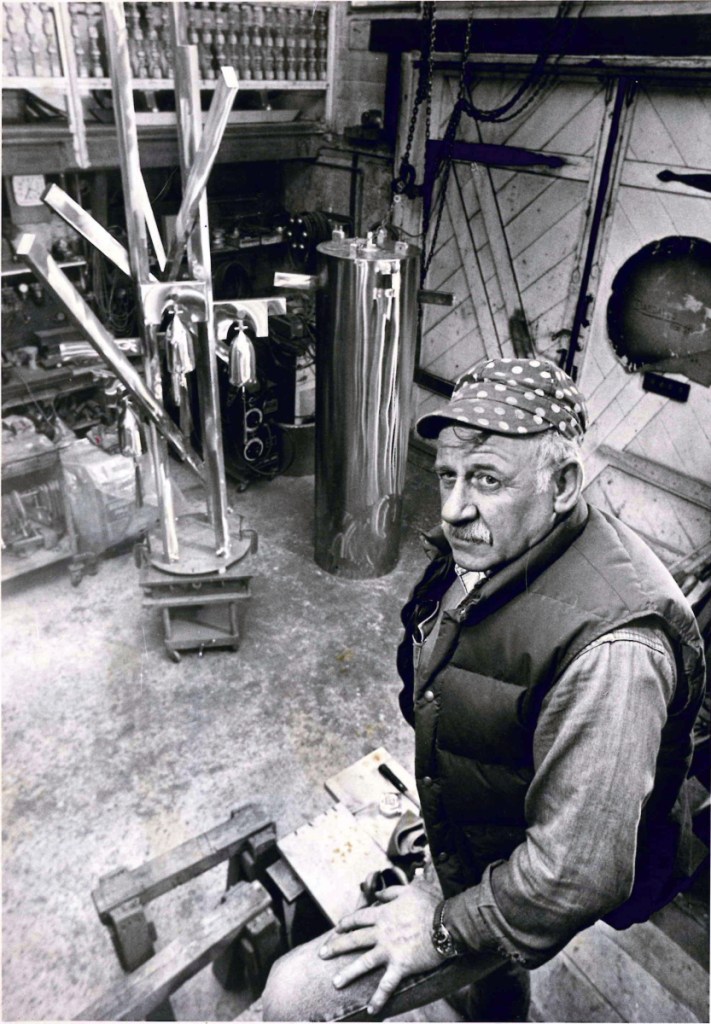I think, after all, that Roger Majorowicz would approve of his sculpture’s new home.
I was skeptical at first.
“The Ticonic,” Majorowicz’s giant work of art that for 21 years stood in the center of The Concourse in downtown Waterville, was moved to the new RiverWalk, which recently opened on the banks of the Kennebec River at Head of Falls.
It was meant to be.
I remember in 1997 when “The Ticonic” was installed in the middle of The Concourse, where the road around it was designed to slow traffic down, which drivers later complained about.
It was a good setting for the sculpture back then, as it was visible in the newly designed parking lot, where walkways had been built and little trees planted to help spiff up the downtown and make the parking area more user-friendly.
I remember thinking at the time, however, that while one could see “The Ticonic” from anywhere on The Concourse, that view would become blocked once the trees grew to full height.
During the first few years, I sometimes drove to The Concourse on my lunch break and sat in my car to watch the sculpture move with the wind. I could not imagine why some people mocked and criticized the sculpture.
It was, and is, magnificent.
Besides loving the work of art, I feel a kinship with “The Ticonic,” having visited Majorowicz in his North Whitefield studio as he was creating it.
It was an interview I shall never forget, with Majorowicz, then 66, in his wide-brimmed straw hat, talking lovingly of the sculpture, into which he was putting his heart and soul and which, he said, would represent 1,600 hours of work when completed.
“I’m trying harder than anything I’ve ever done — because it’s important,” he said at the time.
The city paid $80,000 for the piece, which was installed Nov. 13, 1997, on The Concourse. It was dedicated the next day in a ceremony at which Majorowicz spoke.
The artist, who died in 2014 at 83, explained that “ticonic,” in Abenaki, means “a place to cross,” and part of the sculpture represents the falls on the Kennebec River at what is known as Head of Falls.
At the time he was building it, Majorowicz said that after studying and researching Waterville, he decided to compose a work of abstract forms to symbolize the importance of the city. In a written description of the sculpture, he said it was 33 feet tall, 8.5 feet wide and weighed about 4,000 pounds above its base. It is made of stainless steel, aluminum, bronze, steel, granite and concrete.
“I found Waterville to be a ‘hub city,’ central to the state of Maine,” he said. “The sculpture turns on a hub turntable, inspired by the turntable of the train yards. Waterville is on the move — the geometric temple form symbolizes a city on the upswing with awareness of global concern (the pylon thrust form). Within the composition, the large diagonal form represents the waterfalls, the three wheels were inspired by the history of trains in Waterville. The three vertical pole forms might remind you of the stacks from the paper mills. I have selected an all over silver finish and surface treatment to represent the swirling movement of water in the river and falls. The sunlight on these forms should reflect much as sunlight on water. My intent was to unify these forms into a provocative composition to stimulate the eye and mind and be special and unique to the city of Waterville — a modern, moving city.”
When “The Ticonic” was moved in May this year to the riverfront to be part of the 900-foot walk along the Kennebec River that includes a gazebo, an amphitheater and a children’s play area, I was a bit disappointed that it was placed so far north as to be hardly visible from Front Street.
But after spending a sunny afternoon sitting on a granite wall at the RiverWalk next to “The Ticonic,” I became convinced it is in the absolute perfect spot, looming tall against the backdrop of the river flowing to the east and the old paper mill on the opposite shore. The top of the sculpture rotated as a breeze off the water wafted through the RiverWalk.
Ducks were paddling north in the river, where seagulls were perched on rocks jutting out of the water. The peace was broken only by the sound of a train crossing at the falls and rumbling on toward Colby Street.
How lucky we are that city officials more than 20 years ago had the foresight to bless us with this exquisite work of art.
Those who have visited the RiverWalk say they never knew the sculpture moves with the wind until they saw it in its new home. They say that the more peaceful environment allows them to sit and contemplate it — and that now, they may touch it.
I remember Majorowicz telling me in 1997 that he used materials for “The Ticonic” that would protect it from vandalism — graffiti can be wiped off its smooth surface — and that children could crawl on its base and not harm it.
It was created and built to be user-friendly, to withstand the elements and endure for many years.
May we reap its benefits for decades to come.
Amy Calder has been a Morning Sentinel reporter 30 years. Her column appears here Mondays. She may be reached at acalder@centralmaine.com. For previous Reporting Aside columns, go to centralmaine.com.
Send questions/comments to the editors.




Comments are no longer available on this story